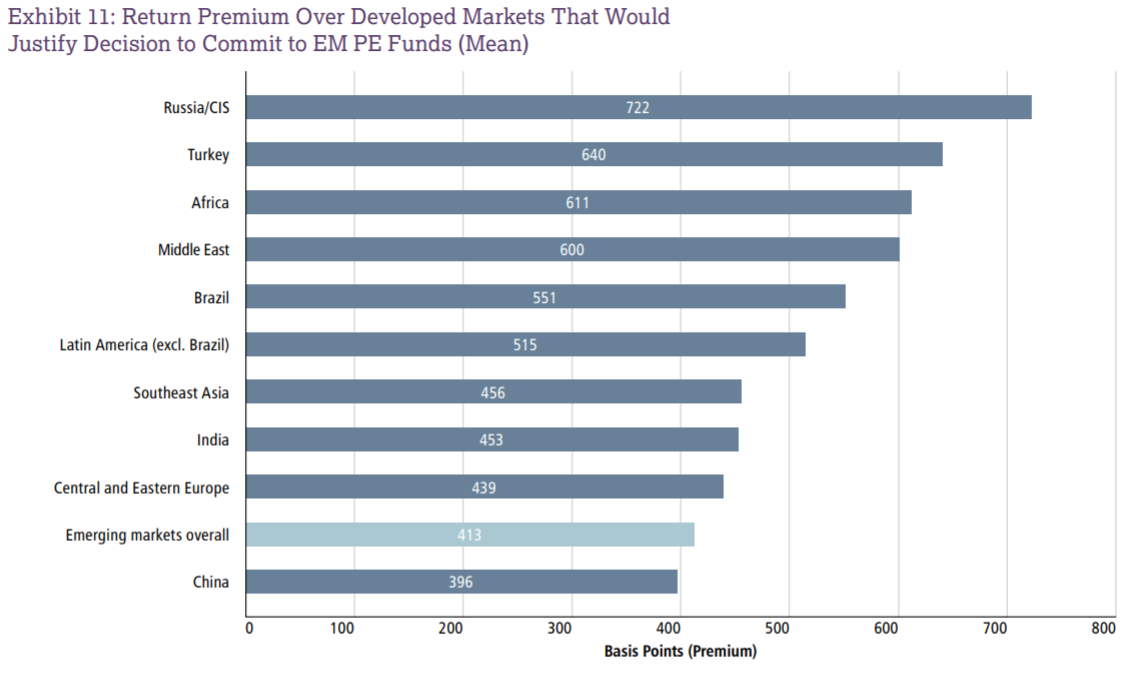Emerging markets (EM) and private equity (PE) are two themes trending in the long-term investing space, making it relevant to consider how they can be combined. Investors may indeed be lending more attention to EM PE in the coming months.
According to data collected from a recent Alpha Research survey, EM will be the most attractive region in 2030. When faced with the hypothetical dilemma of choosing a singular ‘region’ to invest in for 10 years, professional investors in the Netherlands and Belgium would prefer to allocate to EM (39%) over the U.S. (32%) and Europe (11%).
There are multiple factors contributing to this consensus, namely drastic changes in demographics. Data projections lead scientists to believe that populations in Africa and Asia will be much larger and younger than those in the US and Europe, making these regions more favorable from a long-term prospectus. Furthermore, China, India, Kenya, and Nigeria are now home to many of the most exciting new investment opportunities in tech and innovation. It is logical then, that repondents chose ‘tech’ as the most important, all-encompassing theme for long-term investors.
Han Dieperink, consultant and former Chief Investment Officer of Rabobank, shared his predictions for the coming decade with a room full of professional investors at the Alpha Research long-term investing seminar, as the survey results were released. “Technology is directly influencing corporate life spans, which are becoming increasingly shorter. This, in turn, helps small caps to truly thrive […] Related to this, private equity has prevailed. It has become mainstream.”
By coupling the survey results with Mr. Dieperink’s observations, it can be surmised that EM PE is an attractive solution for long-term investors. Although PE returns in developed markets consistently exceed yields found in EM, this could well change due to a number of factors affecting EM such as: less competition, better access to financing, improved accounting standards and growing level of sophistication on a country level. Interestingly, family offices have played a large role in changing the perception of EM PE. This is largely because the level of fiduciary responsibilities are different from pension and sovereign wealth funds, and are therefore at liberty to take the risks associated with the asset class.
Within EM, PE investors are more willing to take risks in Emerging Asia than any other market segment. A recent EMPEA survey concluded that PE investors view Southeast Asia as the most attractive EM segment, followed by India and China. Further, E-commerce and fintech were selected as the most attractive technology areas. While investors have ample confidence in specific regions and sectors, from a wholistic perspective, EM has experienced recent fluctuations in popularity. Assets under management (AUM) at EM-focused private equity firms began rising only about a decade ago.

In July 2017 Reuters reported that private equity funds had increased their total AUM in EM funds to more than $500 billion, signalling that the sector was catching up with other regions. Three months later, the Abraaj scandal hit(1). The firm’s collapse caused industry-wide reverberations, specifically affecting investments made in the Middle East and Africa. There are still concerns that its fall out could contaminate other EMs.
“There’s no doubt that the emerging markets are recognized as having greater growth prospects,” David Rubenstein, co-founder of the Carlyle Group, stated at a recent Global Private Equity Conference. “However, right now the bloom is off the rose because emerging markets have not done as well in the last couple of years – money is pulling away.”
Which, in his view, is the best time to invest.
“Right now I am putting a lot of my own personal money into EM because I think that’s where the greatest reward is likely to be,” Rubenstein claimed. “If everybody was rushing into the EM now, I would be nervous.”
Perhaps it would be exaggerated to predict a major flux, but it is reasonable to believe that PE in EM will gain greater attention from asset managers, institutions and family offices as they explore new frontiers in long-term investing.
1 In 2017 Abraaj collapsed giving way to the biggest private-equity insolvency in global history. Founded in 2002, it grew to become one of the world’s most influential emerging-market investors, with stakes in health care, clean energy, lending and real estate across Africa, Asia, Latin America and Turkey. Source: Bloomberg
